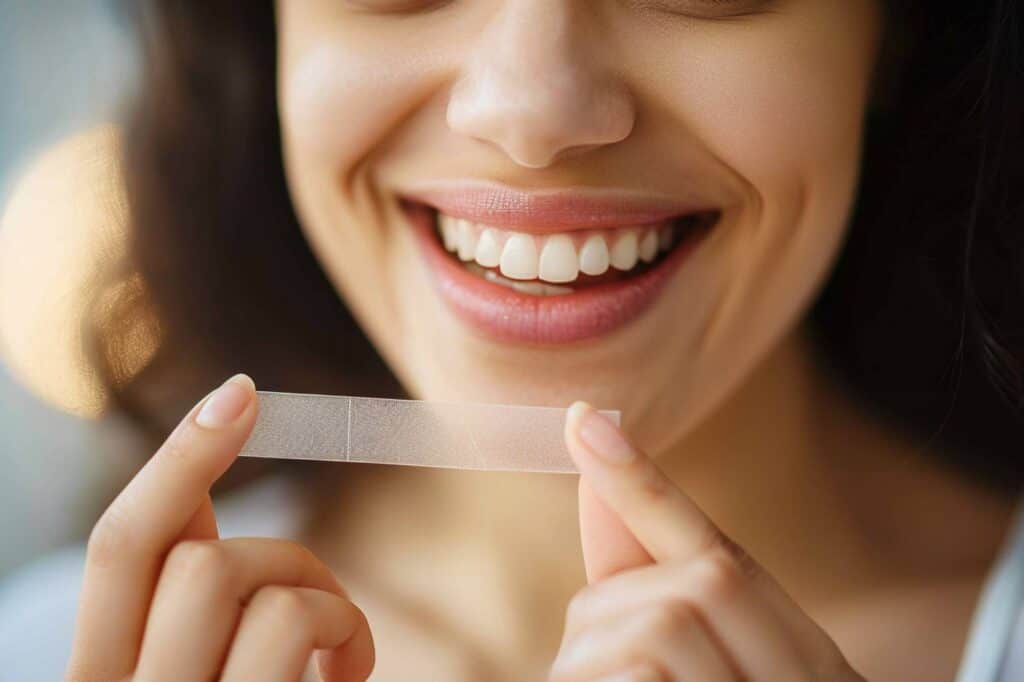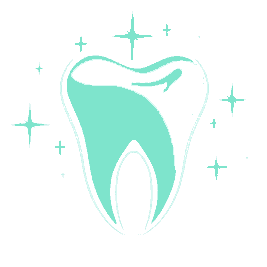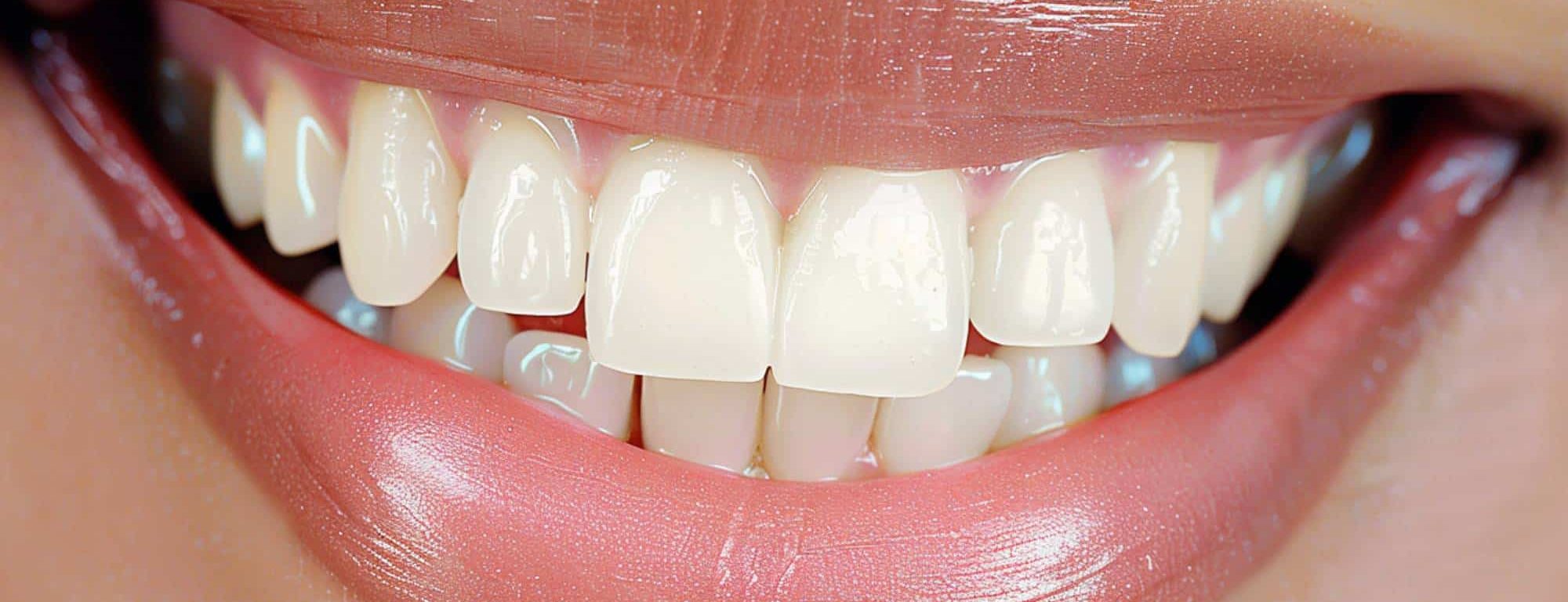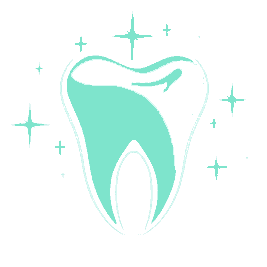Welcome to our guide on safe teeth whitening! Many of us dream of sporting that perfect, sparkling smile. This blog will explore various safe methods for whitening your teeth, emphasizing those approved by dentists. We’ll ensure you can brighten your smile without compromising your dental health.
Understanding Teeth Whitening
Teeth whitening is a popular cosmetic procedure aimed at lightening teeth and removing stains and discoloration. Over time, factors like coffee, tea, red wine, and tobacco can stain teeth. Even aging can cause teeth to lose their bright, white sparkle.
To understand teeth whitening, it’s essential to know about tooth enamel. Enamel is the outer protective layer of our teeth, and it’s where most discolorations occur. These stains can either be on the surface (extrinsic) or inside the enamel (intrinsic). Whitening treatments aim to tackle these stains, making your teeth look brighter.
However, not all whitening methods are safe or suitable for everyone. Safe teeth whitening involves using proven methods that do not damage the tooth enamel or gums. It’s crucial to choose approaches that are effective yet gentle on your teeth. Whether you opt for a DIY method at home or a professional treatment in a dental office, knowing the safe options and how they work is key to achieving that dazzling smile you’re aiming for.
Stay tuned as we delve deeper into dentist-approved methods, which are effective and safe for most people looking to brighten their teeth.
Dentist-Approved Whitening Methods
When considering teeth whitening, opting for dentist-approved methods ensures safety and efficacy. There are two main categories: at-home teeth whitening kits and professional in-office whitening. Each has its benefits and precautions.
At-Home Teeth Whitening Kits
At-home kits can be a convenient and cost-effective way to whiten your teeth. These kits typically include peroxide-based whitening gels that effectively lighten tooth enamel. The American Dental Association (ADA) recommends using products with their seal of acceptance, ensuring they are both safe and effective.
Before using an at-home kit, it’s crucial to:
- Read and follow all instructions carefully.
- Use the product for the recommended duration only to avoid over-whitening.
- Consult with your dentist, especially if you have sensitive teeth or dental restorations.
While these kits are handy, they generally offer more gradual results compared to professional treatments.
Professional In-Office Whitening
For quicker and more dramatic results, professional whitening under the supervision of a dentist is advisable. Techniques such as laser teeth whitening are highly effective. During this procedure, a dentist applies a whitening agent to your teeth and then uses a laser to enhance the whitening process. This method is fast, with visible results in just one session, and it minimizes the risk of gum irritation and tooth sensitivity, common side effects in other methods.
Professional whitening treatments are:
- Quick, often taking about an hour.
- Long-lasting, with proper dental care.
- Safer for your gum and tooth health because of the controlled application.
Precautions:
Regardless of the method you choose, certain precautions should always be taken:
- Avoid whitening if you have gum disease, worn enamel, cavities, or are pregnant.
- Always consult with a dentist to ensure the chosen method is suitable for your dental condition.
FACT
At-home kits are effective for minor discoloration, while professional treatments offer more significant and lasting results under safer conditions.
Natural and DIY Teeth Whitening Solutions
Many people are interested in natural and DIY teeth whitening methods. These options appeal to those who prefer a more holistic approach or want to avoid chemicals. Here are some popular natural remedies that are considered safe, along with their effectiveness and precautions.
Baking Soda
Baking soda is commonly used in oral care due to its mild abrasive properties, which can help remove surface stains on teeth. To use, you can simply mix a small amount of baking soda with water to create a paste and brush your teeth as usual. While it’s effective for removing some surface stains, it should not be used excessively as it can wear down enamel over time.
Hydrogen Peroxide
Hydrogen peroxide is another popular teeth-whitening agent that can be used safely at home in low concentrations. It acts as a bleaching agent to lighten teeth. You can rinse your mouth with a solution of hydrogen peroxide mixed with water, but it’s crucial to use a low concentration (typically 3%) to avoid irritation and overuse can lead to tooth sensitivity.
Fruit Peels
Some suggest that rubbing banana, orange, or lemon peels on your teeth can whiten them due to their natural fruit acids. However, while these methods are harmless, they are not as effective as other whitening methods and frequent use of acidic substances can damage tooth enamel.
Precautions:
- Always rinse your mouth thoroughly after using natural whitening agents to remove any acidic or abrasive substances.
- Limit the use of abrasive materials like baking soda to avoid enamel damage.
- Consult with a dentist before trying new whitening methods, especially if you have sensitive teeth or dental restorations.
While natural and DIY methods can be appealing, they often offer more subtle results compared to professional treatments. For those looking for more noticeable or quicker results, dentist-approved methods might be more appropriate.
Evaluating Teeth Whitening Products
Choosing the right teeth whitening product is crucial for both safety and effectiveness. Here in Buffalo, as in many other places, there are myriad products available, ranging from whitening toothpaste to gels and strips. Here’s how you can evaluate these products to ensure they meet high safety standards:
Ingredients to Look For:
- Peroxide: This is the main whitening agent in many products. Look for products containing hydrogen peroxide or carbamide peroxide, which safely bleach the tooth enamel.
- ADA Seal of Approval: Products bearing the American Dental Association’s Seal of Acceptance are tested for safety and effectiveness.
Ingredients to Avoid:
- High concentrations of peroxide: Although effective, high concentrations can cause gum irritation and tooth sensitivity. Stick to the recommended levels.
- Abrasive substances: While they can remove surface stains, overly abrasive substances can damage enamel over time.
Warning Signs:
- Unapproved products: Avoid products not recognized by reputable dental associations.
- Claims that seem too good to be true: Be wary of products promising extreme results in a very short period.
Usage Instructions:
- Always follow the product’s instructions carefully.
- Limit use to the recommended duration to avoid over-whitening and sensitivity.

By understanding what to look for and what to avoid, you can make an informed decision about which teeth whitening product is right for you. Always consult with your dentist before starting any new whitening regimen, especially if you have existing dental concerns.
Risks and Precautions in Teeth Whitening
While teeth whitening can significantly enhance your smile, it’s important to be aware of the risks and take necessary precautions. Like elsewhere, Buffalo professional and home whitening systems are widely used. Understanding these risks will help ensure that your journey to a brighter smile is safe and successful.
Common Risks:
- Tooth Sensitivity: One of the most common side effects of teeth whitening is increased sensitivity. This occurs because whitening solutions can temporarily affect the nerves in your teeth.
- Gum Irritation: Whitening agents can irritate gum tissue, especially if the product is not applied correctly or if it spills over onto the gums.
- Enamel Damage: Overuse of whitening products or using too strong a concentration can damage the enamel, making your teeth more vulnerable to decay.
Precautions to Take:
- Consultation with a Dentist: Before starting any whitening treatment, consult with a dentist. This is crucial to assess the suitability of your teeth for whitening, especially if you have fillings, crowns, or very sensitive teeth.
- Follow Instructions: Always follow the instructions provided with any whitening product. Using more than recommended can lead to serious side effects.
- Choose Mild Options: For those with sensitive teeth, opting for milder whitening agents or shorter treatment times can help minimize discomfort.
- Regular Dental Check-ups: Maintain regular visits to your dentist to monitor the health of your teeth and gums, ensuring any signs of damage or excessive wear are caught early.
Always prioritize your dental health over cosmetic improvements…
By being aware of these risks and taking the appropriate precautions, you can safely enhance your smile. Always prioritize your dental health over cosmetic improvements and choose methods that align with your overall well-being.
The Impact of Technology on Teeth Whitening
Technological advancements have significantly improved teeth whitening methods, making them safer and more effective. Just like around the world, dentists In Buffalo are now utilizing cutting-edge technologies to provide patients with better results and fewer side effects.
Laser Teeth Whitening
One of the most notable technological advancements in dental care is laser teeth whitening. This method uses a strong but safe laser to activate the whitening gel applied to the teeth, speeding up the bleaching process. The precision of laser technology minimizes the risk of gum irritation and reduces tooth sensitivity compared to older techniques.
LED Lights
LED light technology is another modern tool used in teeth whitening. Often used in conjunction with whitening gels, LED lights enhance the gel’s effectiveness without the heat of traditional lamps, making the process safer and more comfortable for the patient.
These technological advancements not only provide quicker results but also ensure the treatment is administered in a controlled environment, further reducing risks. As technology continues to evolve, we can expect teeth whitening to become even safer and more accessible to everyone seeking a brighter smile.
Frequently Asked Questions
When considering teeth whitening, many people have questions about the process, its safety, and what to expect. Here are some of the most frequently asked questions related to safe teeth whitening:
Is teeth whitening safe for everyone?
Not everyone is a good candidate for teeth whitening. People with gum disease, sensitive teeth, or damaged enamel should consult with a dentist before proceeding. Additionally, pregnant or nursing women are typically advised to avoid teeth whitening.
How often can I safely whiten my teeth?
It’s generally safe to undergo professional teeth whitening once or twice a year. However, overuse of at-home kits or whitening products can lead to tooth sensitivity and damage. Always follow the guidelines provided by the product or your dentist.
What are the signs of over-whitening?
Signs that you might be over-whitening your teeth include increased sensitivity, gum irritation, and translucent or unnaturally white teeth. If you notice these symptoms, it’s important to stop whitening and consult a dentist.
Can natural teeth whitening methods damage enamel?
Some natural methods, such as using highly abrasive substances or acidic fruits, can wear down enamel over time. Always use mild, dentist-approved options and limit their frequency.
Conclusion
Choosing the right teeth whitening method should always prioritize safety and effectiveness. Consult with dental professionals, adhere to product guidelines, and consider your dental history before beginning any whitening treatment. By following these steps, you can ensure a brighter smile that maintains both the beauty and health of your teeth.


